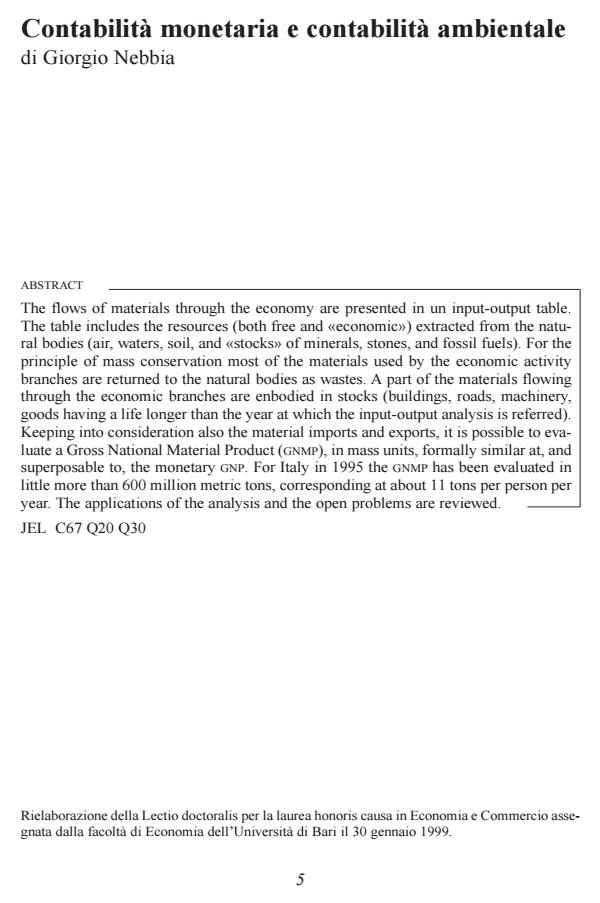Contabilità monetaria e contabilità ambientale
Journal title ECONOMIA PUBBLICA
Author/s Giorgio Nebbia
Publishing Year 1 Issue 2000/6 Language Italian
Pages 29 P. File size 302 KB
DOI
DOI is like a bar code for intellectual property: to have more infomation
click here
Below, you can see the article first page
If you want to buy this article in PDF format, you can do it, following the instructions to buy download credits

FrancoAngeli is member of Publishers International Linking Association, Inc (PILA), a not-for-profit association which run the CrossRef service enabling links to and from online scholarly content.
The flows of materials through the economy are presented in un input-output table. The table includes the resources (both free and "economic") extracted from the natural bodies (air, waters, soil, and "stocks" of minerals, stones, and fossil fuels). For the principle of mass conservation most of the materials used by the economic activity branches are returned to the natural bodies as wastes. A part of the materials flowing through the economic branches are enbodied in stocks (buildings, roads, machinery, goods having a life longer than the year at which the input-output analysis is referred). Keeping into consideration also the material imports and exports, it is possible to evaluate a Gross National Material Product (GNMP), in mass units, formally similar at, and superposable to, the monetary GNP. For Italy in 1995 the GNMP has been evaluated in little more than 600 million metric tons, corresponding at about 11 tons per person per year. The applications of the analysis and the open problems are reviewed.
Giorgio Nebbia, Contabilità monetaria e contabilità ambientale in "ECONOMIA PUBBLICA " 6/2000, pp , DOI: